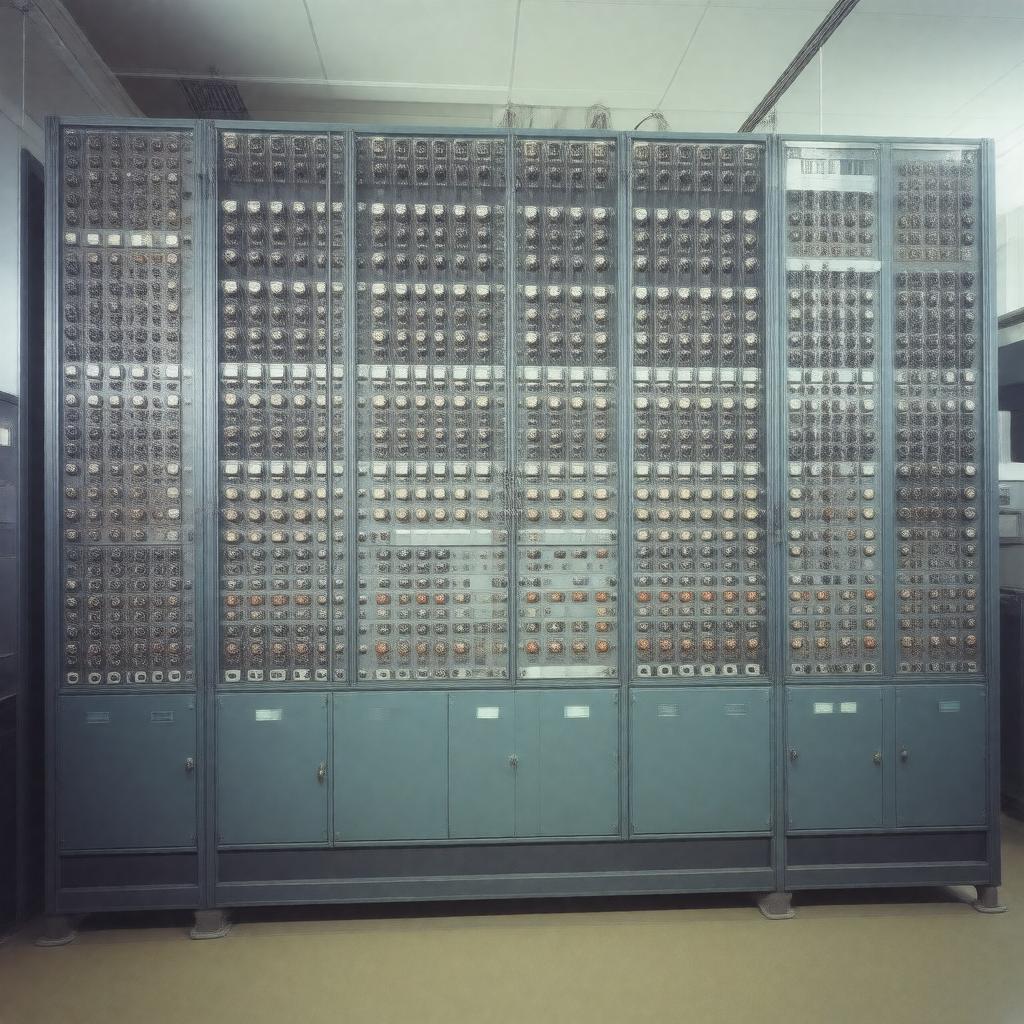Prompt
"Create an image of the ENIAC (Electronic Numerical Integrator and Computer), a historic general-purpose electronic computer, located at the Moore School of Electrical Engineering, University of Pennsylvania. The image should showcase the massive machine with its characteristic rows of vacuum tubes, switches, and plugboards. Include some punch cards and operators in the background to highlight its purpose for military calculations, such as calculating artillery firing tables. Depict the computer in a realistic and detailed style, emphasizing its significance as the first general-purpose programmable electronic computer, with a focus on its impressive scale, weighing about 30 tons and powered by 150 kW."

